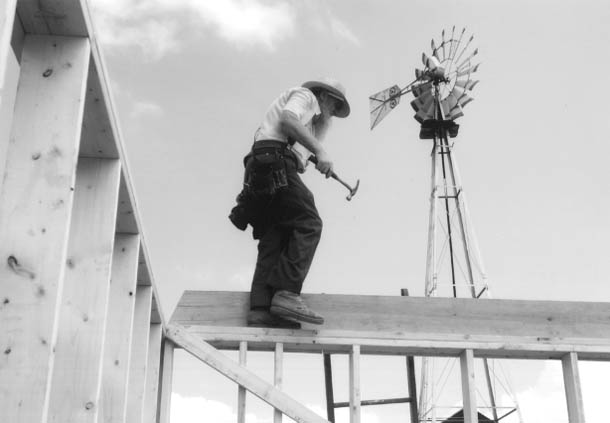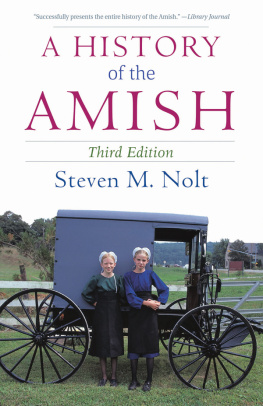Shipshewana

Shipshewana
An Indiana Amish Community
Dorothy O. Pratt


This book is a publication of
Quarry Books
an imprint of Indiana University Press
601 North Morton Street
Bloomington, IN 47404-3797 USA
http://iupress.indiana.edu
Telephone orders | 800-842-6796 |
Fax orders | 812-855-7931 |
Orders by e-mail |
2004 by Dorothy O. Pratt
All rights reserved
No part of this book may be reproduced or utilized in any form or by any means, electronic or mechanical, including photocopying and recording, or by any information storage and retrieval system, without permission in writing from the publisher. The Association of American University Presses Resolution on Permissions constitutes the only exception to this prohibition.
The paper used in this publication meets the minimum requirements of American National Standard for Information SciencesPermanence of Paper for Printed Library Materials, ANSI Z39.48-1984.
Manufactured in the United States of America
Library of Congress Cataloging-in-Publication Data
Pratt, Dorothy O., date
Shipshewana : An Indiana Amish community / Dorothy O. Pratt.
p. cm.
Includes bibliographical references and index.
ISBN 0-253-34518-9 (hardcover : alk. paper)
1. AmishIndianaShipshewanaHistory. 2. AmishIndianaShipshewanaSocial conditions. 3. AmishIndianaLaGrange CountyHistory. 4. AmishIndianaLaGrange CountySocial conditions. 5. Shipshewana (Ind.)History. 6. LaGrange County (Ind.)History. I. Title.
F534.S54P73 2004
977.2'79dc22
2004007615
1 2 3 4 5 09 08 07 06 05 04
To Jack, Jack IV, and Daniel.
Thank you.
Contents
Acknowledgments
When I first began this project, little did I expect it to take over my life and consume so much of my time and effort. The book began from a simple question: How did the Amish get to LaGrange, and how did they survive? Thence came a dissertation, and from there sprang the beginnings of a book. It has been a long journey, and one that at times I feared would not be completed. The narrative, however, is a compelling one, and I felt some responsibility to those Amish folk who have shared their story and have trusted me to write honestly about their experiences. This book would never have been completed without their help.
In addition, there are others I should thank. The Indiana State Archives, the Indiana Historical Society, the Mennonite Church USA ArchivesGoshen at Goshen College, the Mennonite Historical Library, the South Bend Tribune, the LaGrange County Library, the St. Joseph County Library, and the University of Notre Dame Library are amazing organizations that surprisingly work miracles to help a struggling researcher. At the University of Notre Dame, Mark Roche, Dean of the College of Arts and Letters; Hugh Page of the Undergraduate Studies Office; and many in the History Department have offered greatly appreciated help.
Others have read the manuscript and offered suggestions, some anonymously, others well known to me, such as Walter Nugent, Gail Bederman, Phil Gleason, Thomas Blantz, C.S.C., Vincent DeSantis, and Laura Crago. Their comments have been valuable and were treasured. Emily Holmess editing helped to carve away excess wording that I had been loath to expunge. I also appreciate Indiana University Press, which expressed faith in this project and has helped bring it to fruition.
Mostly, I thank my sons, Jack and Daniel, who have lived through the birth of this book, and especially my husband, Jack, who has overcome the mysteries of formatting that I could never conquer. I am grateful for you all.
Shipshewana
Introduction
Amish Country is one of the most popular tourist attractions in Indiana. Demand for tourist information has increased so much that the Elkhart Visitors Center sponsors a Heritage Trail Tour, a CD-prompted, self-guided journey through LaGrange, Noble, and Elkhart Counties, which contain the third-largest settlement of Old Order Amish in the world. Here there are no amusement parks, exclusive restaurants, or resorts. The area is not even particularly easy to find, yet the people come.
The attraction of this Amish community, primarily set in LaGrange County, is more complex than it appears. Although academics often worry about the inevitable process of assimilation, every tourist knows that part of the appeal is that the Amish seem to have resisted integration into mainstream society. The public asks: How did this group survive as a cultural and ethnic entity when others did not? How has their culture been robust enough to withstand the onslaughts of materialism, war, economic depression, and technology?
This book is an ethnic case study of one particular Amish settlement; it is not a religious history. It emphasizes how the group has managed not only to survive but also to thrive.
Examination of the Amish through the lens of ethnicity opens valuable avenues of analysis, particularly regarding their resistance to change. Other ethnic studies focus primarily on Americanization as predestined linear evolution. Cultural change, however, is neither wholesale transformation nor stagnation. All cultural groups negotiate small and large decisions daily, but for some, including the Amish, the possibilities are more narrowly defined. Moreover, nuanced alterations in cultural choices are not the same as substantive transformations in social structure, which can provoke profound reverberations throughout a society. As a case in point, this study concentrates on the Old Order Amish in Shipshewana, LaGrange County, Indiana, a group that settles on the continuum of change far closer to the concept of cultural persistence than most.
Although the general population knows the entire Amish settlement by the towns name of Shipshewana, the name really should not be used to generalize the Amish in the area. The Amish group themselves by settlement; the settlement in northern Indiana is named Elkhart-LaGrange. Each settlement is divided into districts, overseen by bishops. Only one of these districts is known as Shipshewana, and the townspeople are quick to explain that the little village of Shipshewana is composed of more than just Old Order Amish. I have chosen, however, to use the popular term for the area rather than the insider term, because that is what the general population knows. In fact, when referring to the settlement, listeners often correct me to say, Oh, you mean Shipshewana. I have succumbed to the inevitable.
Early Amish History
Religious beliefs define the Old Order Amish worldview and act as a prism through which the Amish interpret their environment. Therefore, to understand the history of the Amish in Indiana during the nineteenth and twentieth centuries, one should have a rudimentary understanding of their history prior to 1841, when the Amish arrived in northern Indiana. The Amish trace their origins to the Anabaptist movement during the Protestant Reformation in sixteenth-century Switzerland. These proto-Amish shared the Protestant insistence on the supreme authority of the Bible, but their views differed from those of other reformation movements concerning baptism, separation of church and state, and nonresistance.
Next page







![Beverly M Lewis] - The Beverly Lewis Amish Heritage Cookbook](/uploads/posts/book/96304/thumbs/beverly-m-lewis-the-beverly-lewis-amish-heritage.jpg)




